This is one in a series of posts on the Fujifilm GFX 100S. You should be able to find all the posts about that camera in the Category List on the right sidebar, below the Articles widget. There’s a drop-down menu there that you can use to get to all the posts in this series; just look for “GFX 100S”. Since it’s more about the lenses than the camera, I’m also tagging it with the other Fuji GFX tags.
In the previous six posts, I tested the off axis performance of the Fujifilm 110 mm f/2, 80 mm f/1.7 , 250 mm f/4, 63 mm f/2.8, 45 mm f/2.8, and 120 mm f/4 macro GF lenses on a GFX 100S. Now I’ll do the same with the 50mm f/3.5 lens. Since there’s been a lot of interest in comparing the 45 and the 50 mm GF lenses, I’ll include information on the 45 here, to9.
Here’s the test protocol:
- RRS carbon fiber legs
- C1 head
- Target distance 4 meters for 45 mm lens
- Target distance 4.4 meters for 50 mm lens
- ISO 100
- Electronic shutter
- 10-second self timer
- f/2.8 through f/11 in whole-stop steps for the 45
- f/4 through f/11 in whole-stop steps for the 50
- Exposure time set by camera in A mode
- Focus bracketing, step size 1, 120 to 60 exposures
- Initial focus well short of target
- Convert RAF to DNG using Adobe DNG Converter
- Extract raw mosaics with dcraw (I’ll change this to libraw and drop the DNG conversion when I get the chance, but the Matlab program that controls all this is written for dcraw)
- Extract slanted edge for each raw plane in a Matlab program the Jack Hogan originally wrote, and that I’ve been modifying for years.
- Analyze the slanted edges and produce MTF curves using MTF Mapper (great program; thanks, Frans)
- Fit curves to the MTF Mapper MTF50 values in Matlab
- Correct for systematic GFX focus bracketing inconsistencies
- Analyze and graph in Matlab
I analyzed a horizontal edge in the center of the frame, and both a horizontal and a vertical edge on the far right side of the frame. The horizontal edge is oriented in a radial direction, and that’s how I’m identifying it in the plots. The horizontal edge is oriented in a tangential direction, and that’s the way I’m tagging it. I also redid the tests with the target on the lens axis. I looked at both horizontal and vertical edges. The edges are identified on the graphs as, respectively, radial and tangential edges. Those terms don’t make sensor on axis. The numbers ought to be the same.
Here are the MTF50 results for the 45 and the 50, in cycles per picture height:
I measured the MTF50 on each of the raw channels, and am reporting on the MTF50 on a white-balanced composite of those channels, which is mostly the green channel. The 50 doesn’t get a lot on internet respect, but it’s not far off the 45 here.
Here is the microcontrast at 0.33 cycles per pixel.
Now we’ll look at longitudinal chromatic aberration (LoCA).
The above plots the shift of the red raw image plane (on the sensor side of the lens) compared to the white-balanced raw plane. If anything, the 50 has less LoCA than the 45.
The blue LoCA for the 50 is greater.
Now we’ll look at some transfocal bokeh images.
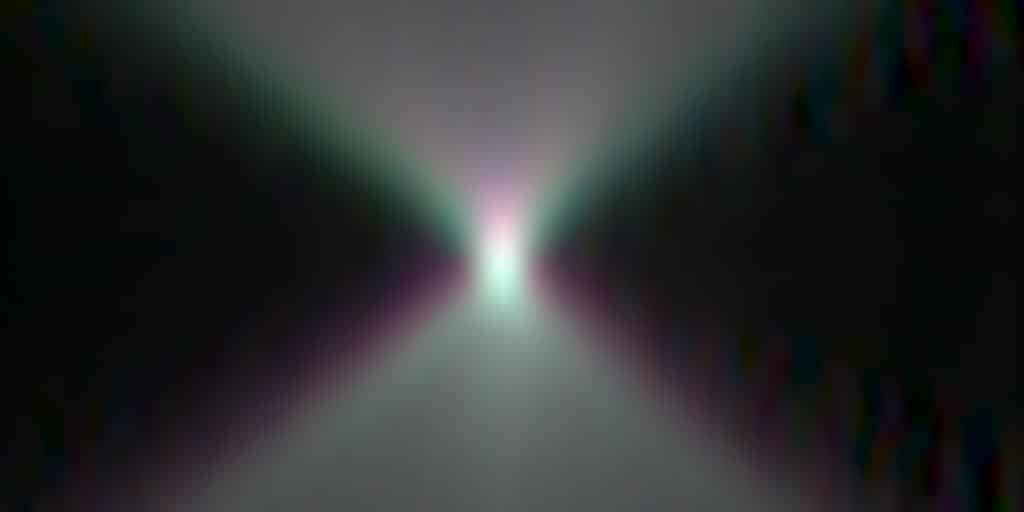

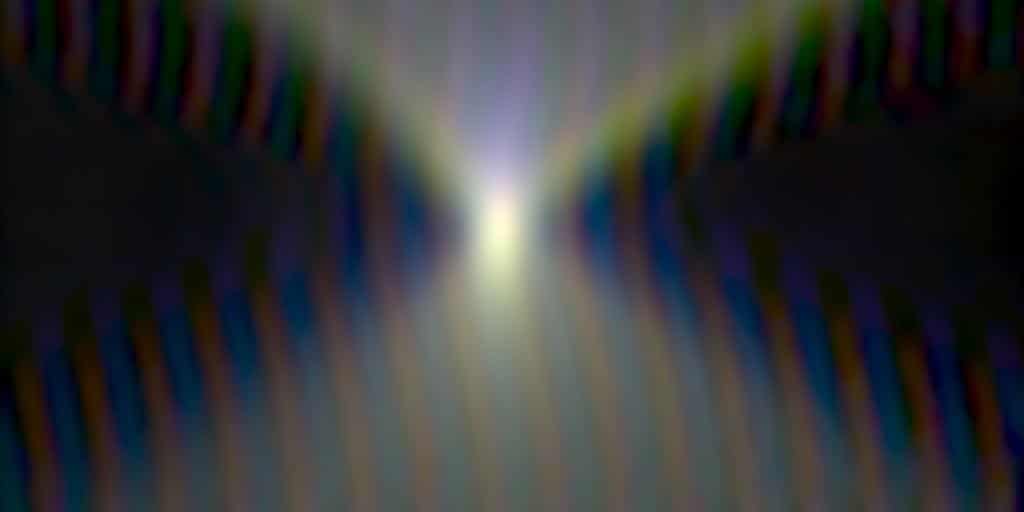
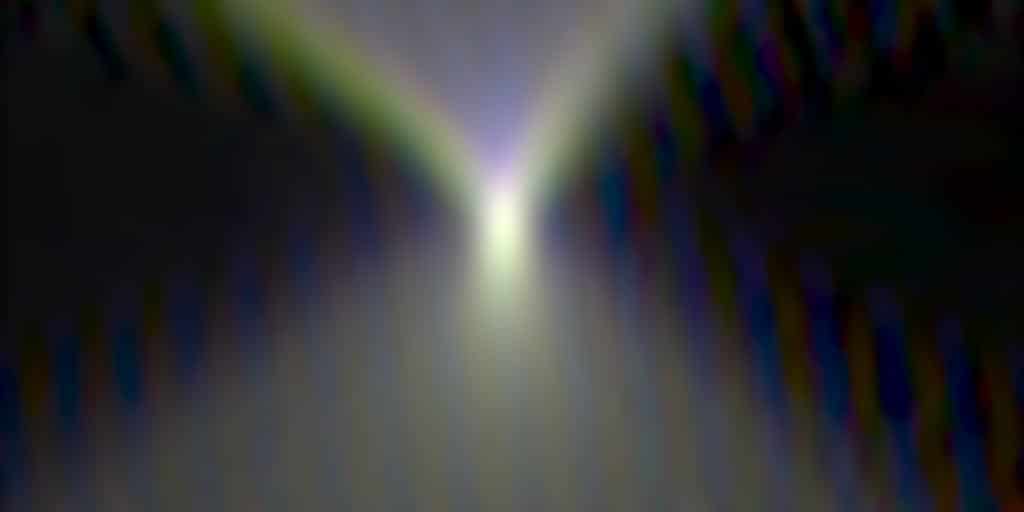
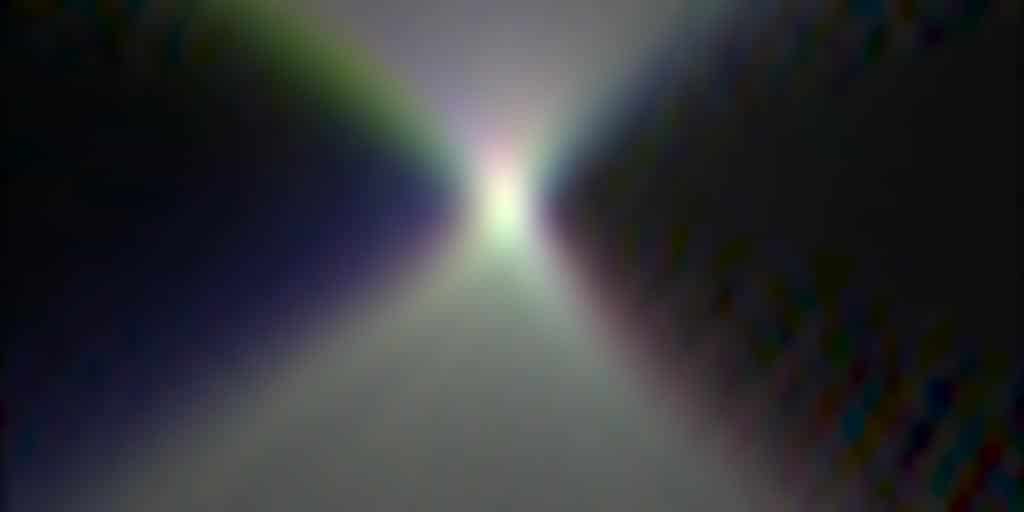
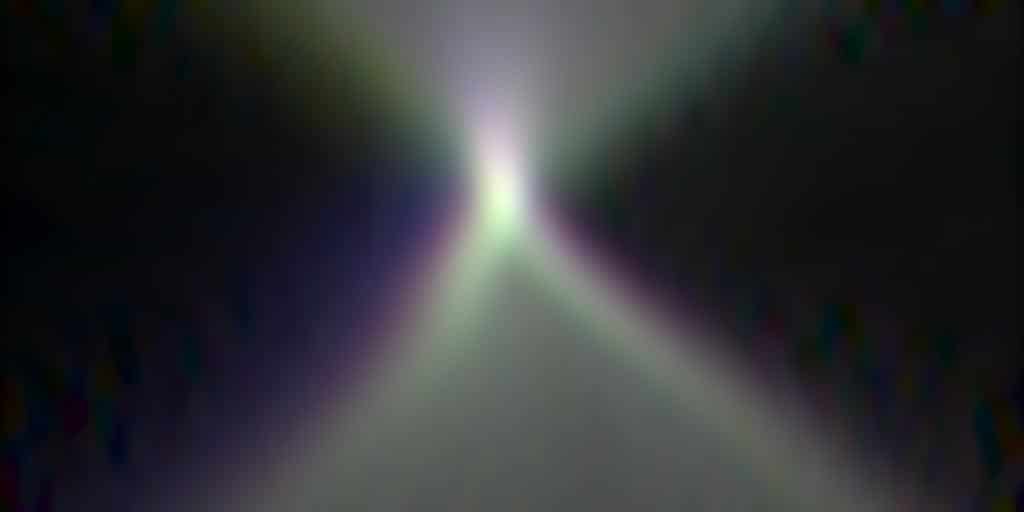
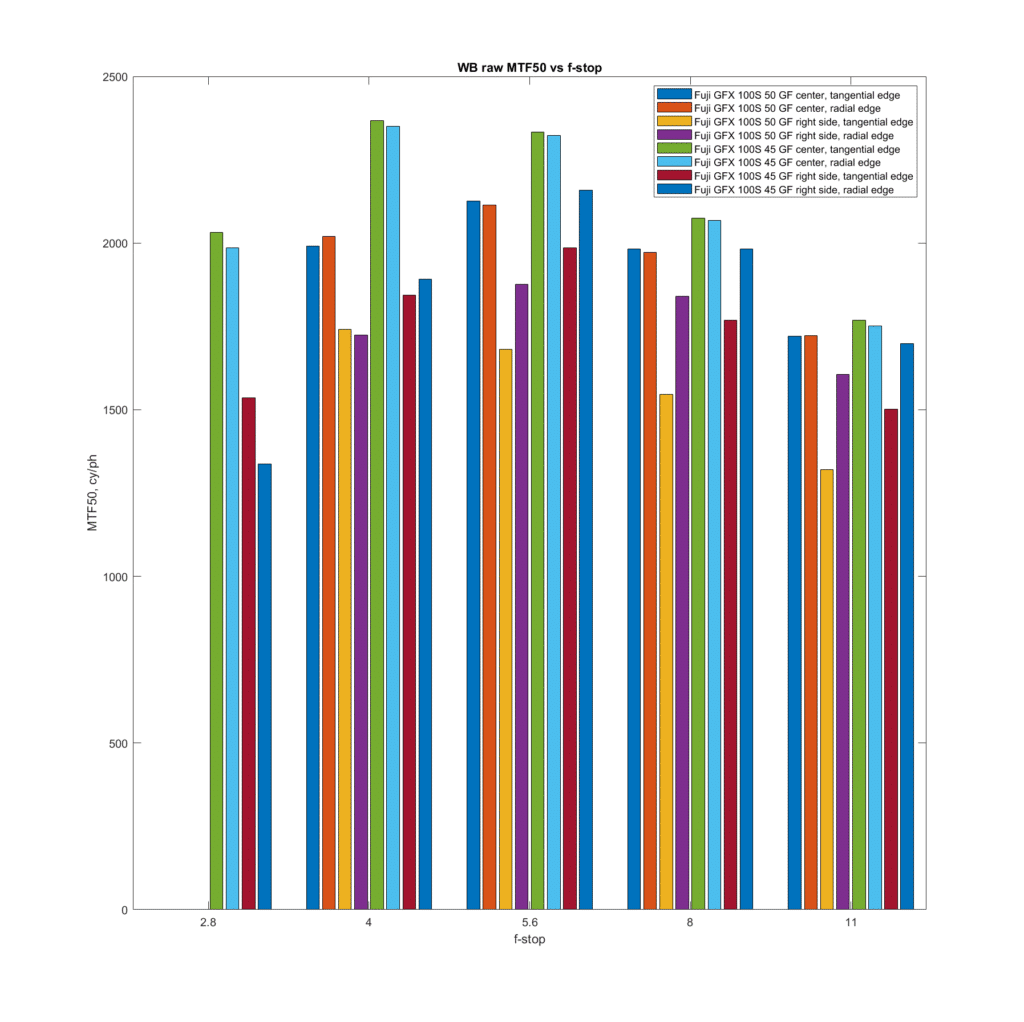
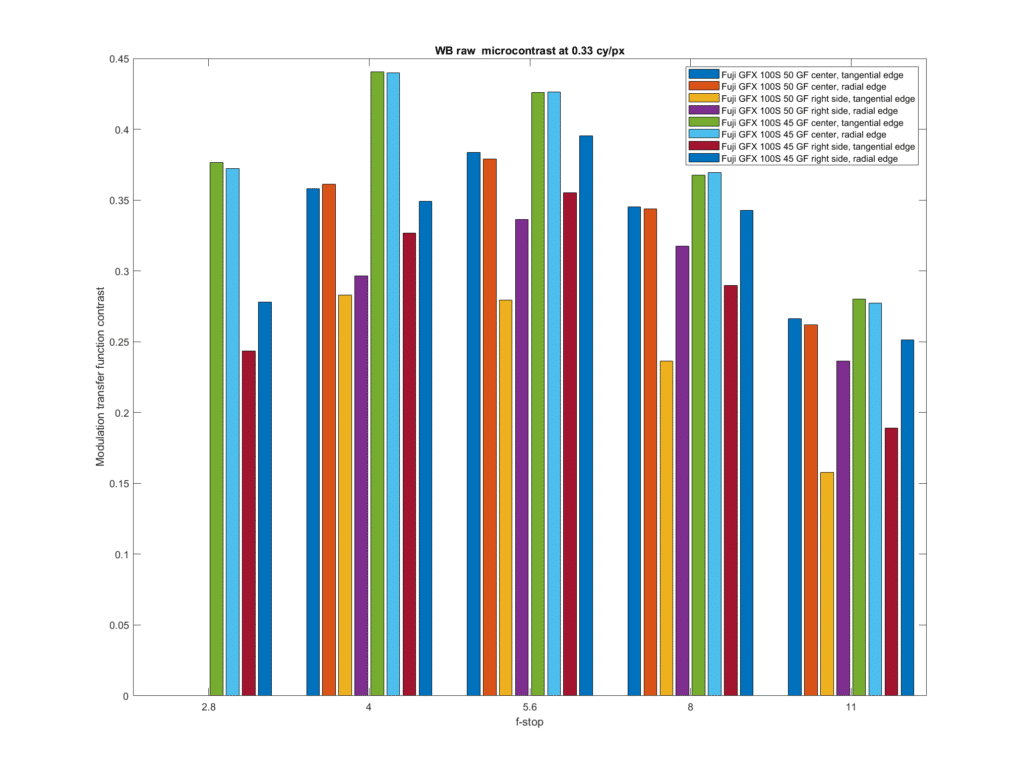
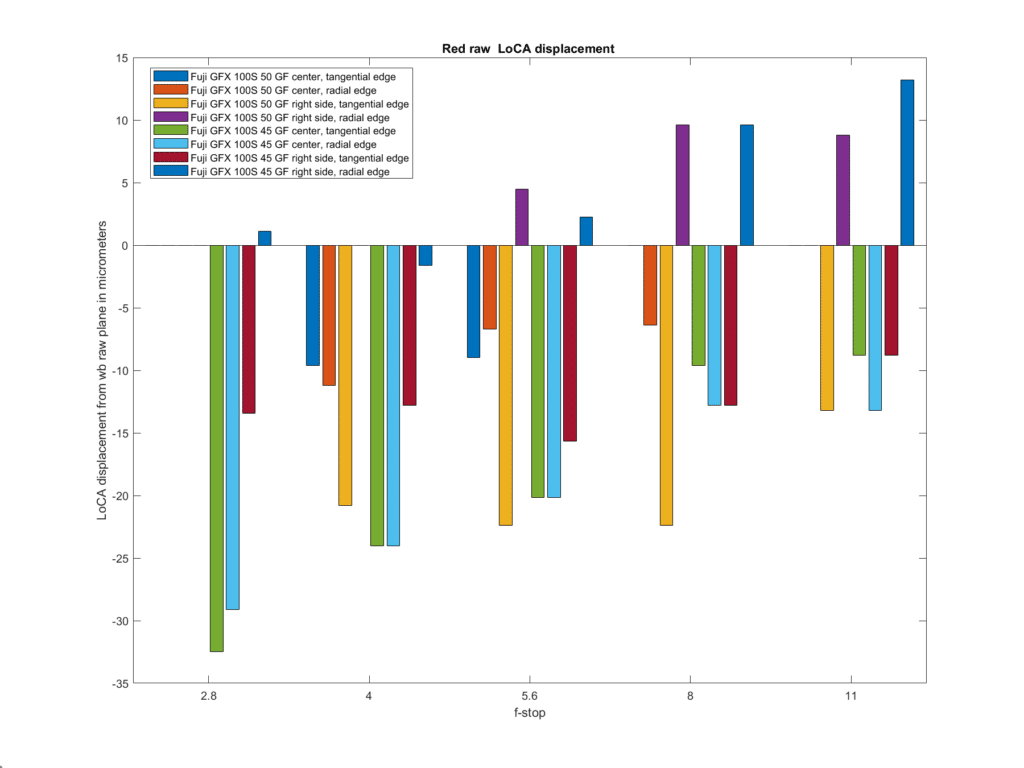
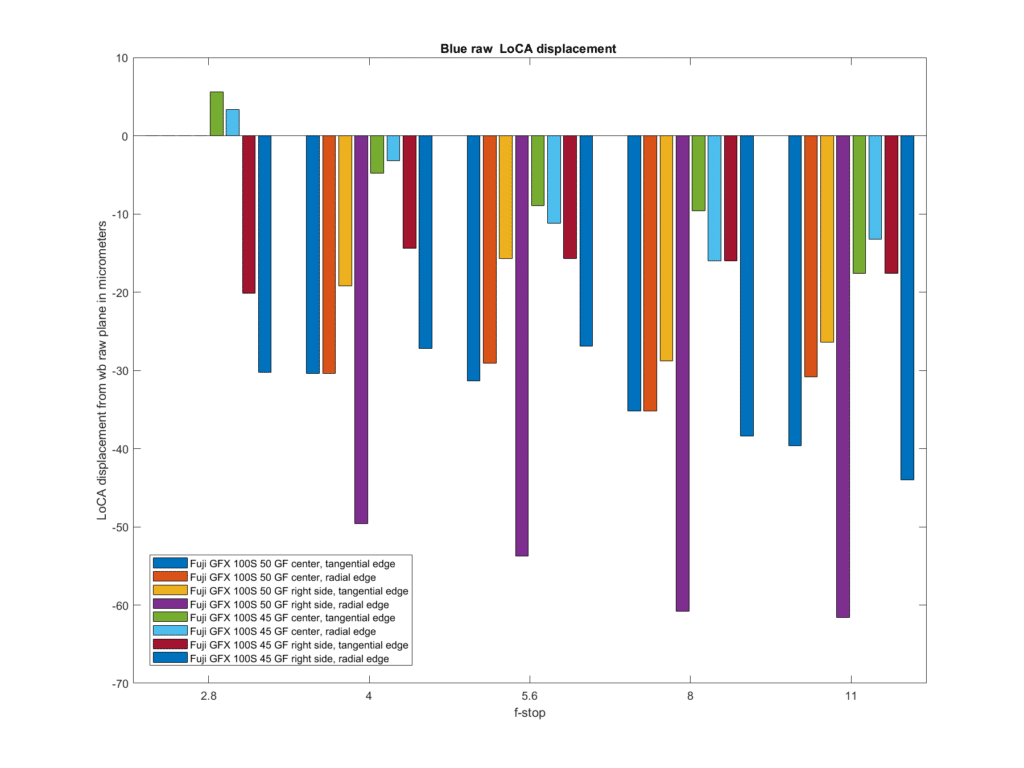
Leave a Reply